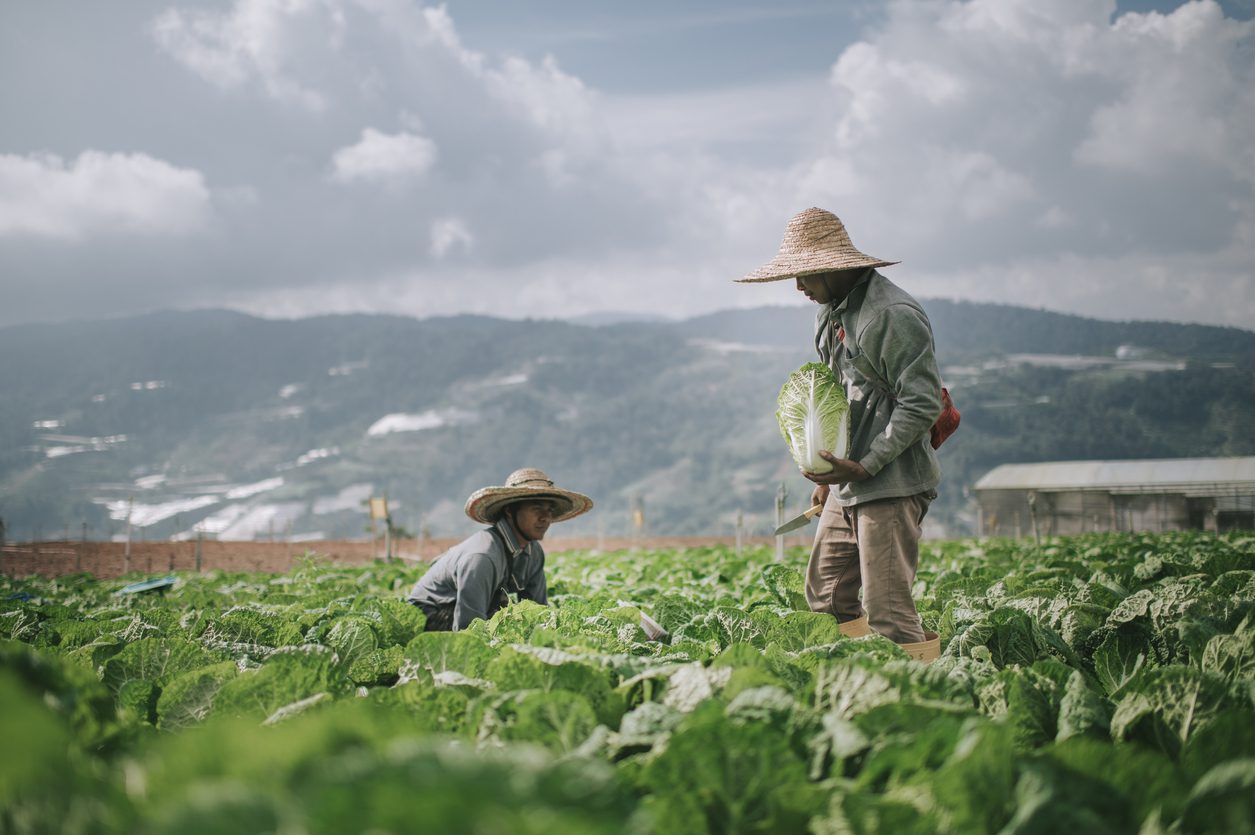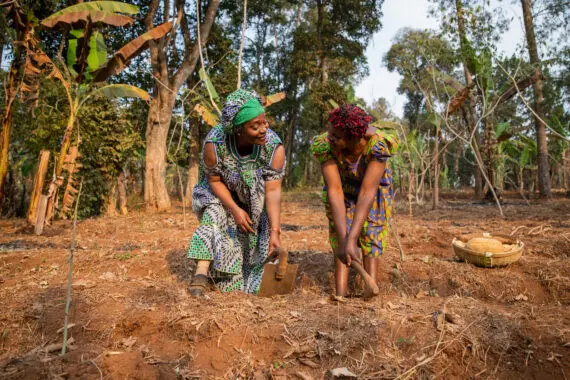By Mackenzie Hoekstra
At Bread for the World, our mission is to end hunger and malnutrition in all its forms. This is Goal 2 of the Sustainable Development Goals, which were adopted by the United States and nearly every other country in 2015.
The United States is fortunate to have the human and financial resources needed to meet the goal here at home. The missing ingredient for a hunger-free America is a commitment, by the U.S. population and elected leadership, to get the job done.
Part of ensuring that everyone has access to nutritious food is to grow nutritious crops and enable people to access and afford these foods—fruits and vegetables, for the most part.
Consider what you have had to eat today. Maybe it included an apple at breakfast, some almonds as a snack, and corn and potatoes for dinner. Each of these foods has something important in common: they are all considered specialty crops. Specialty crops encompass fruits, vegetables, and tree nuts in American grocery stores as well as horticultural and nursery crops. They are essential to a nutritious diet, but they also require significant labor to harvest.
U.S. farmers are facing a labor shortage, adding pressure to an already struggling agricultural economy. But it is not a new problem—it has been a problem for decades.
Why? Let’s set the scene. In 1950, Americans had a median age of 29, which means simply that half the population was older than 29 and half was younger. There were 6.4 million people earning a living through agricultural work. In the 75 years since then, the median age has risen to 38, and there are only 2.3 million people working in agriculture—a much smaller number despite the larger population of the country today.
The tension is between, on one hand, fewer American workers interested in and equipped to work in agriculture, and, on the other hand, a larger population with greater awareness of how important it is to eat nutrient-dense foods such as fruits and vegetables.
This means that U.S. farm operators must recruit workers from other countries. Economic policymakers need to put in place fair policies for both foreign workers and their employers, and to establish clear rules on imports of specialty crop products, especially tropical crops.
“Guest worker” programs are one approach to employing needed workers from outside the U.S. The first of these programs was the Bracero program, which ran from 1942-1964 and established a framework for temporary foreign agricultural workers. The current policy, in effect since 1952, is the H-2-A visa program for temporary agricultural workers. It has grown significantly over the past decades, particularly in recent years. About 85,000 workers participated in 2012, with more than 371,000 workers in 2022.
About 17 percent of all farm workers are H-2A visa holders, but they make up a much larger share of specialty crop workers—and this share has been growing rapidly. In 2012, 52 percent of H-2A positions were allocated to people working with fruits and vegetables. By 2019, this share grew to 67 percent.
The current administration has acted to limit paths to permanent residence or green card status and to deport undocumented workers. This is straining specialty crop production and the U.S. agricultural sector as a whole. Both make it harder and more expensive for families to buy fresh fruits and vegetables—the very foods that public health officials and nutritionists say that Americans need to eat more frequently.
Other recent actions that affect access to fruits and vegetables is the imposition of steep tariffs on foods imported from Mexico and Canada. Both the tariffs themselves, and the uncertainty surrounding which tariffs will be in effect at any given time, affect the supply and prices of imported specialty crops. The U.S. imports 51 percent of its fruit from Mexico and 69 percent of its vegetables. Another 20 percent of the vegetables we eat comes from Canada, although it is not a significant source of imported fruits at just 2 percent.
It will require legislation passed by Congress to enable U.S. farms to produce more food, particularly fruits and vegetables, by expanding the number of jobseekers from other countries who can get work permits. Better nutrition for the U.S. population, particularly a wider selection of fruits and vegetables at affordable prices, also depends on passage of legislation by Congress.
Several pieces of legislation have been introduced in recent years, most recently S. 4351, the Border Act of 2024, in the Senate. Although all the bills received bipartisan support, none have passed in either the House or the Senate.
The continued failure to adopt measures that meet the needs of farm operators, foreign workers, and U.S. consumers is a significant barrier to food security for all Americans. Bread for the World will continue to advocate for solutions or steps forward from Congress, whether that is through the U.S. farm bill or other legislation.
Mackenzie Hoekstra is a domestic policy intern, Government Relations, with Bread for the World.



